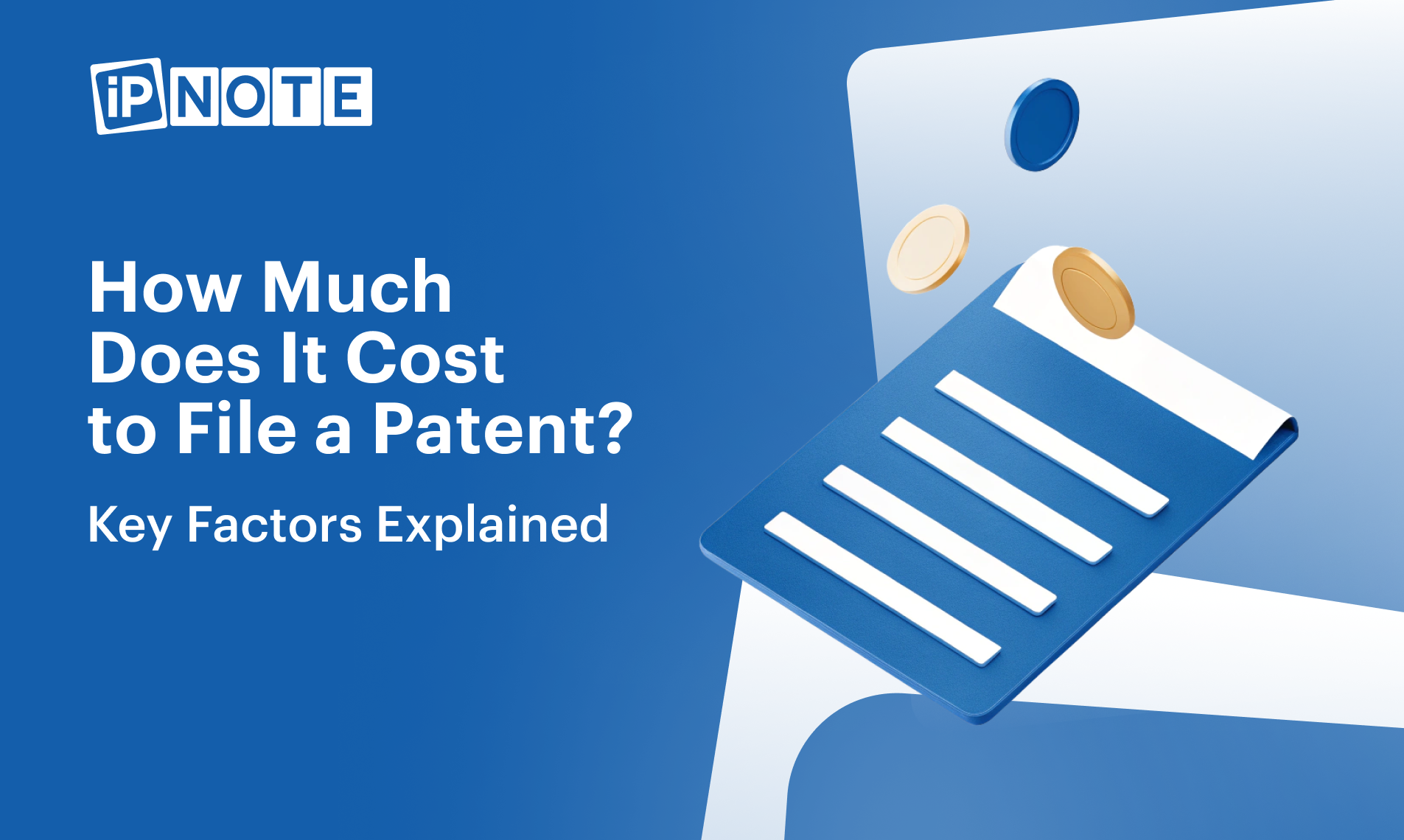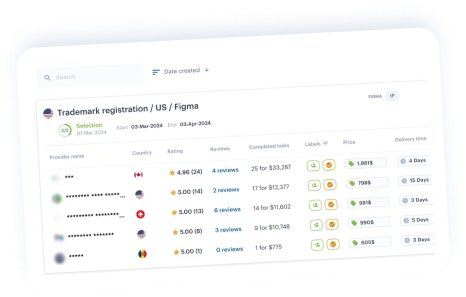Overview
The cost to file a patent varies significantly based on the type of patent and the size of the entity.
- Utility patents typically range from $400 to $2,000
- Design patents range from $510 to $1,300
- Plant patents start around $400
Additional expenses, such as legal fees and maintenance charges, can greatly influence the overall cost. This highlights the critical need for careful financial planning.
Furthermore, utilizing strategies like provisional applications and entity status discounts can effectively mitigate expenses, ultimately benefiting the patent filing process.
Introduction
Navigating the complex landscape of patent applications presents a significant challenge for inventors and businesses. With various types of patents—utility, design, and plant—each accompanied by its own costs and requirements, comprehending the financial implications is essential.
From initial filing fees to ongoing maintenance expenses, the journey toward securing patent protection is fraught with potential financial pitfalls.
This article explores the intricacies of patent costs, offering insights on:
- Budgeting effectively
- Managing legal fees
- Exploring strategies to minimize expenses
By equipping readers with crucial knowledge and expert tips, this guide empowers innovators to make informed decisions in their pursuit of intellectual property protection.
Understand Different Patent Types and Their Costs
Legal protections are categorized into three main types: utility protections, design protections, and plant protections, each fulfilling distinct roles and exhibiting unique cost structures.
- Utility Patents: The most prevalent type, utility protections safeguard the functional aspects of inventions. In 2025, how much it costs to file a patent for utility inventions will range from $400 to $2,000, depending on the size of the entity—large, small, or micro. This variation underscores the importance of comprehending how much it costs to file a patent linked to each entity type. Furthermore, employing an intellectual property lawyer can significantly increase legal expenses, making it crucial to consider how much it costs to file a patent when planning for application filings.
- Design Rights: These rights protect the ornamental design of functional items. The filing fees for design registrations typically range from $510 to $1,300. This expense illustrates the specialized nature of design protections, which require a different approach compared to utility protections.
- Plant Patents: Awarded for new plant varieties, these protections generally involve expenses comparable to those of utility protections, beginning at approximately $400. This similarity in expenses highlights the necessity for meticulous financial planning when evaluating intellectual property submissions.
Understanding these distinctions is essential for efficient financial planning in the application process, especially regarding how much it costs to file a patent, as each type involves specific costs and requirements. For instance, the intellectual property review process, crucial for assessing eligibility for protection, incurs additional fees ranging from $640 to $800. This examination is a vital step that can significantly affect the overall cost and timeline of obtaining intellectual property rights. As noted by Beatrice Sainz, Director of Customer Success, “Clients have consistently rated our lawyers highly for their expertise in Patents, reflecting a strong overall satisfaction score of 4.9.” This underscores the importance of engaging seasoned legal advisors to navigate the complexities of intellectual property filings.
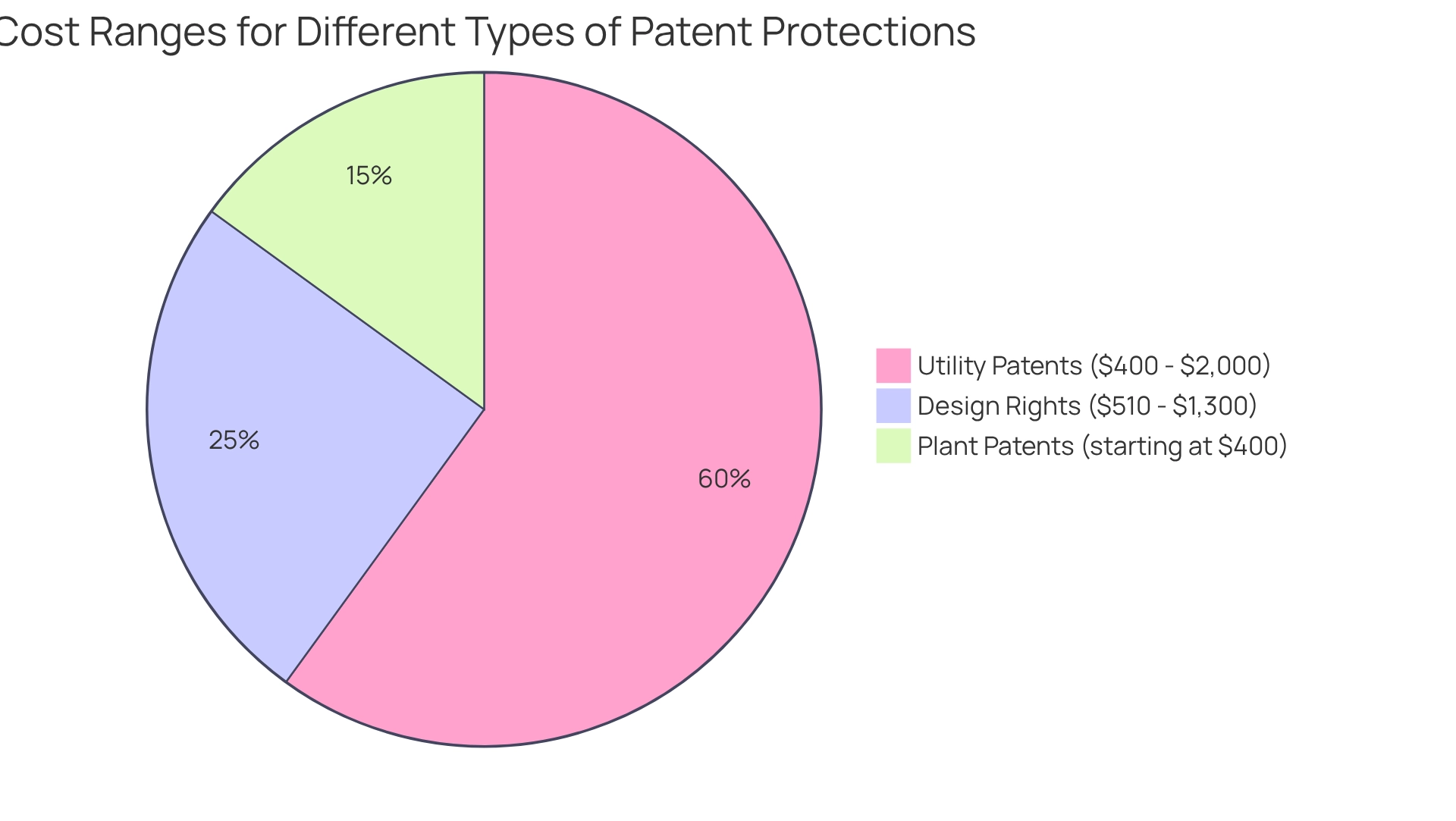
Identify Filing Fees and Additional Expenses
When filing a patent, several fees must be considered:
- Filing Fees: The primary expenses associated with submitting an application for intellectual property include the basic filing charge, which varies depending on the type of invention and the size of the entity. As of January 2025, the USPTO charges approximately $2,000 for large entities, $1,000 for small entities, and $400 for micro entities seeking utility protections.
- Search and Examination Charges: Beyond the filing cost, applicants are responsible for search and examination charges, typically ranging from $500 to $1,500. These charges cover the evaluation of the invention request to ensure it meets the necessary standards for acceptance.
- Legal Fees: Engaging an intellectual property lawyer can significantly impact total expenses. Fees for preparing and submitting an application generally range from $5,000 to $15,000, depending on the complexity of the invention and the lawyer’s expertise.
- Additional Expenses: Additional costs to consider include professional drawings, which can fall between $300 and $1,000, and ongoing maintenance fees that are required at various intervals after the intellectual property is granted. Furthermore, applicants should be aware of the administrative reinstatement charge of $1,806.00 for those who may need to restore their rights after being excluded or suspended on ethical grounds. Understanding how much does it cost to file a patent is crucial for developing a practical budget for the application process.
- Expert Insights: Intellectual property lawyers emphasize the importance of budgeting for both anticipated and unforeseen costs during the filing process. As Sangeeta Shah, a recognized authority in the field, notes, “Understanding the intricacies of the intellectual property process is essential for effective management of IP expenses.” This proactive approach can help mitigate financial surprises and ensure a smoother application journey.
- Case Studies: Firms that adeptly manage attorney fees often report enhanced control over their overall IP budgets. For example, firms that utilize fixed-fee arrangements with their legal counsel can predict costs more accurately, leading to improved financial planning. Moreover, the U.S. Chamber of Commerce Global Innovation Policy Center ranked the United States second in its 2019 International IP Index for Innovations, Related Rights, and Limitations, underscoring the importance of robust intellectual property management in elevating a company’s standing in global innovation.
By considering these various charges and costs, along with the recommendation to seek legal guidance for further details on modifications and their potential implications, companies can more effectively prepare for the financial obligations associated with securing protection for their inventions.
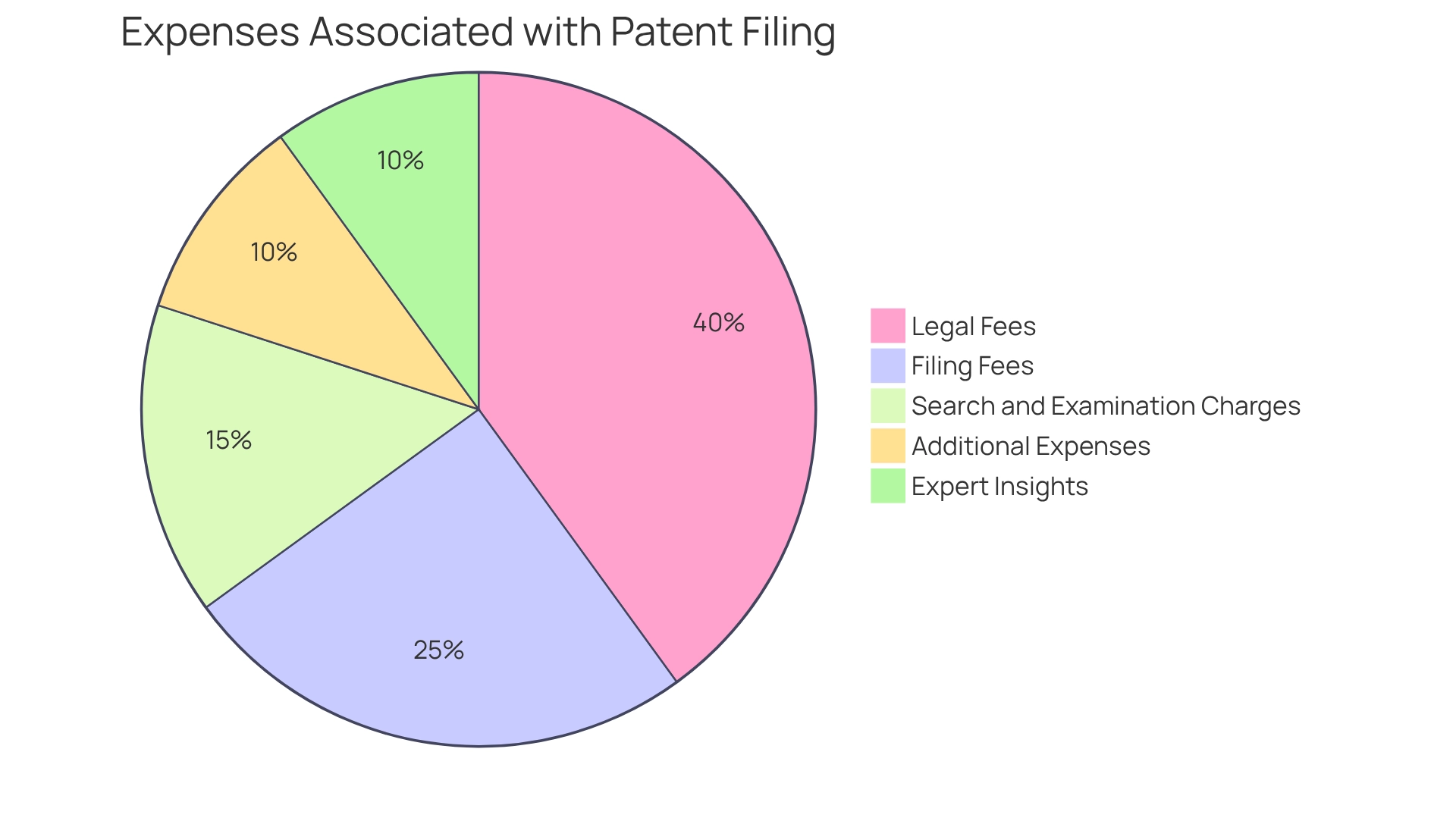
Plan for Ongoing Patent Maintenance and Legal Costs
Once a patent is granted, ongoing maintenance charges are essential to keep it in force. These charges are typically payable at intervals of 3.5, 7.5, and 11.5 years after the grant. The current maintenance fees are structured as follows:
- 3.5-Year Maintenance Fee: Approximately $1,600 for large entities, $800 for small entities, and $400 for micro entities.
- 7.5-Year Maintenance Fee: This fee escalates to about $3,600 for large entities and $1,800 for small entities.
- 11.5-Year Maintenance Fee: The final maintenance fee can reach up to $7,400 for large entities.
Alongside these upkeep charges, rights holders must also consider possible legal expenses related to upholding their rights or defending against infringement allegations. Legal fees for intellectual property attorneys can vary significantly, typically ranging from $200 to $1,200 per hour.
Given the substantial financial consequences, it is essential for businesses to prepare for these continuous expenses to ensure that their intellectual properties remain valuable resources.
Recent insights indicate that micro entity provisional submissions are more than twice as likely to request extensions compared to other applicants. This statistic underscores the importance of understanding the financial landscape of maintenance, as these extensions can lead to additional expenses that should be factored into budgeting. Moreover, as Billy Ellis, a legal assistant, observes, “The USPTO’s fee hikes for the 2025 fiscal year are significant, impacting various facets of the application and prosecution process.” This highlights the necessity for businesses to adjust their financial plans due to the 7.5% increase in licensing charges enacted by the USPTO to address rising operational costs.
Businesses should also consider case studies, such as the recent changes to intellectual property fees, which illustrate how others have effectively managed their maintenance budgets in response to these evolving expenses. By learning from these examples, businesses can better navigate the financial implications of ongoing intellectual property maintenance.
Explore Strategies to Reduce Patent Filing Costs
To effectively minimize patent filing costs, consider the following strategies:
- Employ Temporary Protections: Submitting a provisional request is a strategic action that enables inventors to obtain an early filing date while delaying the costs linked to a complete request. The expense for temporary submissions usually falls between $70 and $300, rendering it an affordable option for many. Grasping how much it costs to file a patent and other expenses associated with intellectual property in advance can assist in preventing financial pressure on businesses or creators.
- Leverage Small and Micro Entity Status: Applicants who qualify for small or micro entity status can benefit from substantial discounts on filing and maintenance fees—up to 60% for small entities and 80% for micro entities. This can significantly alleviate the financial burden of patenting.
- Conduct Preliminary Searches: Engaging in initial research through free online databases can help identify existing registrations and refine your proposal. This proactive approach can lead to reduced attorney fees by minimizing the need for extensive revisions later in the process. Intellectual property attorneys can assist in conducting these searches to ensure thoroughness and accuracy.
- Outsource Drafting: Delegating the drafting of your patent request to specialized patent service providers can be a cost-effective alternative to traditional law firms. These providers often offer competitive rates, allowing for quality service without the premium costs. However, collaborating with an IP lawyer can guarantee that the submission meets all legal requirements and maximizes protection.
- Prepare Thorough Documentation: A well-prepared invention disclosure document can simplify the rights registration process. By offering thorough information in advance, applicants can minimize the duration and expenses related to attorney consultations. IP attorneys can help develop these documents to ensure all necessary information is included.
Furthermore, be mindful of concealed expenses resulting from frequent application errors, which can result in thousands for rework and delays.
By applying these strategies, companies can efficiently manage and reduce how much it costs to file a patent, ensuring that their intellectual property is safeguarded without incurring needless charges. Furthermore, focusing on key jurisdictions for international filings can optimize costs, as highlighted in the case study “Navigating International Patent Filing,” which emphasizes the importance of selecting countries strategically to manage expenses effectively. As noted by legal writer Miles Almadrones, “This article is for informational purposes. This content is not legal advice, it is the expression of the author and has not been evaluated by LegalZoom for accuracy or changes in the law.” Lastly, considering the importance of privacy and terms of use in IP management practices can further enhance your approach.
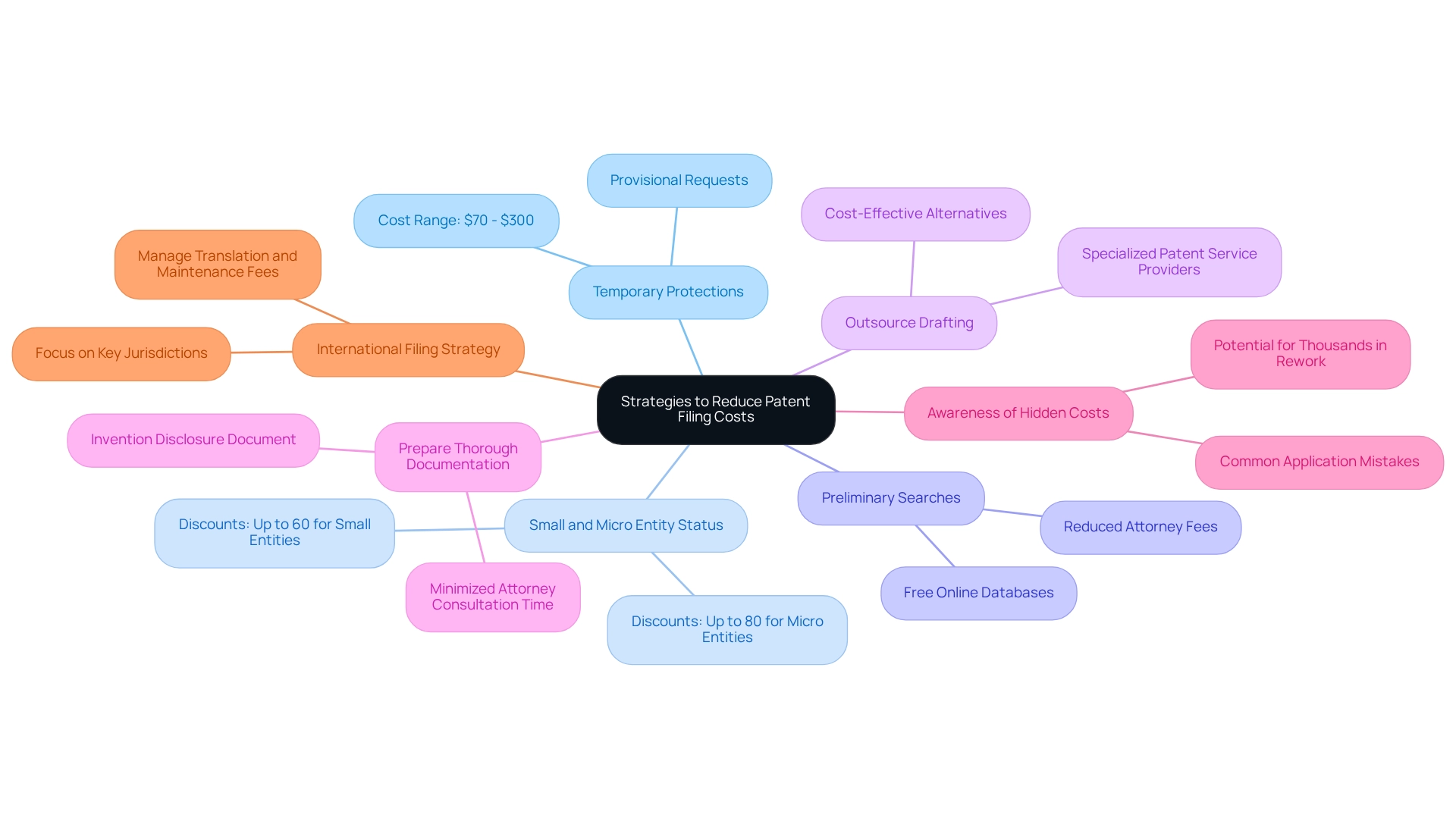
Conclusion
Navigating the complexities of patent applications demands a solid understanding of the associated costs and strategies to manage them effectively. This article has examined the various types of patents—utility, design, and plant—each characterized by its unique cost structures and filing requirements. Grasping these distinctions is essential for inventors and businesses as they allocate budgets for their intellectual property needs.
Key expenses, including filing fees, search and examination costs, and attorney fees, can accumulate rapidly, underscoring the necessity of planning for both anticipated and unforeseen financial commitments. By employing strategies such as provisional patents, leveraging small and micro entity discounts, and outsourcing drafting, applicants can substantially lower their patent filing costs. Furthermore, adopting a proactive approach to budgeting for ongoing maintenance fees and potential legal expenses is critical for ensuring the longevity and value of patent protection.
In conclusion, understanding the financial landscape of patent applications equips inventors to make strategic decisions that can foster long-term success. By navigating the patent process with a clear comprehension of costs and effective management strategies, innovators can safeguard their intellectual property without succumbing to overwhelming financial burdens. Embracing a thorough planning process not only enhances the likelihood of securing patents but also cultivates a sustainable pathway toward innovation and growth.
Master Your Patent Costs with Smart Strategies. Start now with iPNOTE and streamline your IP management while saving money.
Frequently Asked Questions
What are the three main types of legal protections for inventions?
The three main types of legal protections are utility protections, design protections, and plant protections, each serving distinct roles and having unique cost structures.
What do utility patents protect, and what are the filing costs associated with them?
Utility patents protect the functional aspects of inventions. In 2025, filing costs for utility patents will range from $400 to $2,000, depending on the size of the entity (large, small, or micro).
How do design rights differ from utility protections?
Design rights protect the ornamental design of functional items, whereas utility protections focus on the functional aspects. Filing fees for design registrations typically range from $510 to $1,300.
What are plant patents, and how do their costs compare to utility patents?
Plant patents are awarded for new plant varieties and generally involve expenses comparable to utility protections, starting at approximately $400.
Why is it important to understand the costs associated with each type of patent?
Understanding the costs is essential for efficient financial planning in the application process, as each type of patent involves specific costs and requirements.
What additional fees might be incurred during the intellectual property review process?
The intellectual property review process incurs additional fees ranging from $640 to $800, which can significantly affect the overall cost and timeline of obtaining intellectual property rights.
How can engaging an intellectual property lawyer impact the costs of filing a patent?
Employing an intellectual property lawyer can significantly increase legal expenses, making it crucial to consider these costs when planning for application filings.
What feedback have clients provided regarding the expertise of patent lawyers?
Clients have consistently rated patent lawyers highly for their expertise, reflecting a strong overall satisfaction score of 4.9.




